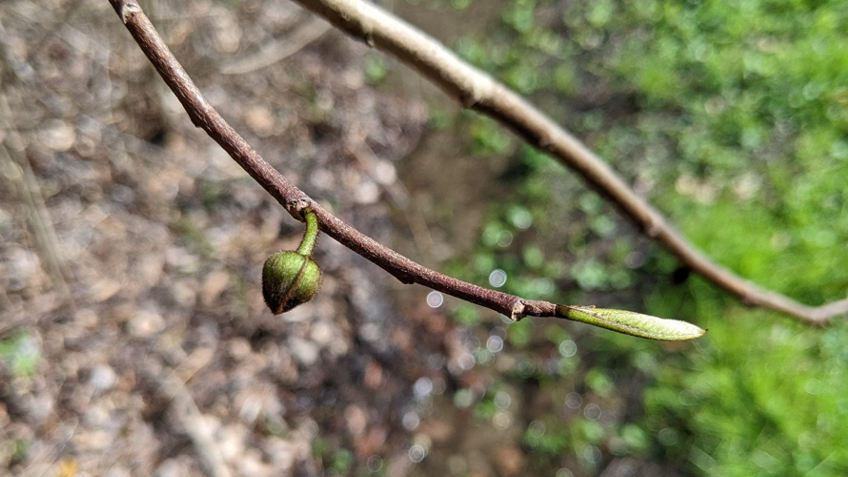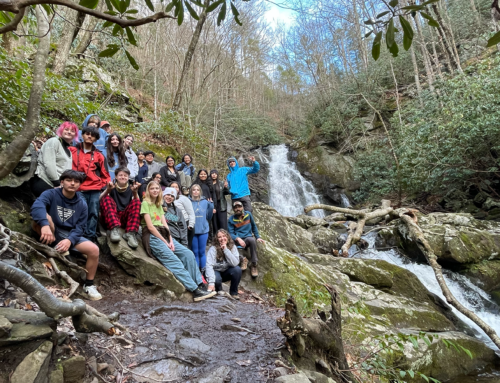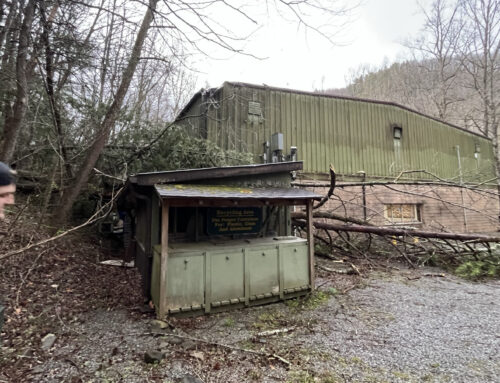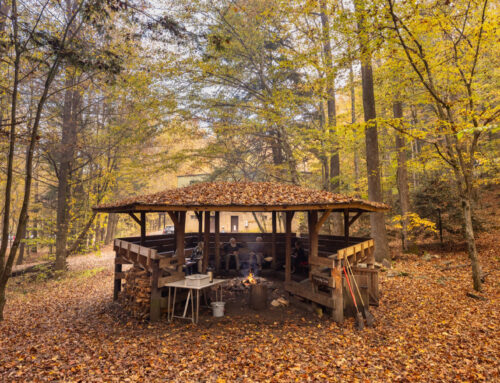Written by Elizabeth Davis, Field Programs Specialist at Tremont.
Plop, plop, plop. I’ve been shaking pawpaw trees (gently, don’t worry) for over an hour, and finally hit pay dirt. These slender understory trees hide their fruit beneath their leaves in the fall and the only way to harvest them is to shake and listen for the plop. But, I’d better duck, because pawpaws are BIG.
Pawpaws are truly strange trees. When crushed in my hand, the leaves smell like freshly poured asphalt. The flowers are only pollinated by carrion beetles and flies – animals that more commonly keep company with roadkill and vultures. Each pawpaw patch is also “self-infertile,” meaning that it must be pollinated with another patch, or stand, of pawpaw to produce fruit. Sometimes the nearest patch might be hundreds of feet, if not miles, away.
Despite their stinky smells and weird and demanding pollination needs, pawpaw fruits are a true delicacy. Smooth, sweet, like a mango mixed with a banana, they’re the perfect addition to a smoothie or eaten with a spoon.
Another pawpaw conundrum lies in the fact that it claims the role of the largest edible tree fruit native to North America, and yet very little has been done towards cultivating the fruits for agricultural use. The quality of wild fruit varies dramatically and opportunity abounds for experimental crosses of new varieties.

After my pawpaw harvest last fall, I stored the seeds in the fridge over winter, a process called stratification. Last week, those seeds found a new home in deep planters at our second campus. There they’ll rest until mid-summer, when some will emerge from their long dormancy, breaking the soil crust with their new shoots.
And maybe, in five to seven years or so, when these plants are old enough to produce fruit, you will help walk our second campus and harvest the bounty.







